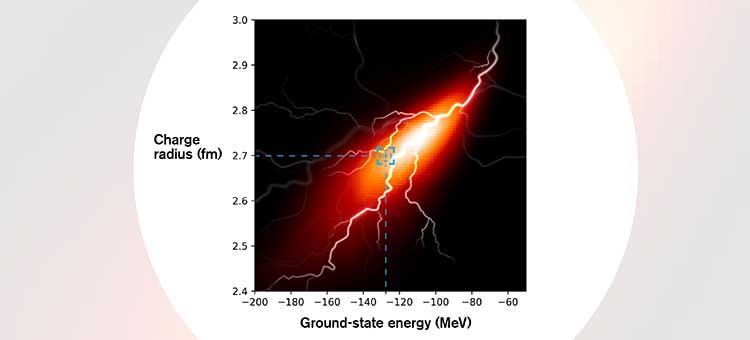In collaboration with international research colleagues, physicist Andreas Ekström at the Chalmers University of Technology has developed a new method to solve complex physics problems at lightning speed. The newly developed method can calculate the properties of atomic nuclei incredibly quickly.
Scientists designed the method based on a concept called Emulation. Here, Emulation refers to an approximate calculation replaces a complete and more complex calculation.
The method is based on something called eigenvector continuation (EVC). It allows for the Emulation of many quantum mechanical properties of atomic nuclei with incredible speed and accuracy.
Instead of directly solving the time-consuming and complex many-body problem over and over again, scientists took a shortcut- they used a transformation into a special subspace. The solution ends up almost exactly the same. It is reminiscent of algorithms from machine learning, but ultimately the scientists have designed a completely new method. It opens up much more prospects in fundamental research in areas, for example, It opens up much more prospects in essential examination in territories, for example, nuclear physics.

Research leader Andreas Ekström, Associate Professor at the Department of Physics at Chalmers, said, “Now that we can emulate atomic nuclei using this method, we have a completely new tool to construct and analyze theoretical descriptions of the forces between protons and neutrons inside the atomic nucleus.”
Scientists noted, “The study sheds new light on topics ranging from neutron stars and their properties to the innermost structure and decay of nuclei. Basic research in nuclear physics also provides essential input to astrophysics, atomic physics, and particle physics.”
Andreas Ekström said, “I am incredibly excited to be able to make calculations with such accuracy and efficiency. Compared with our previous methods, it feels like we are now computing at lightning speed. In our ongoing work here at Chalmers, we hope to improve the emulation method further and perform advanced statistical analyses of our quantum mechanical models. With this emulation method, it appears that we can achieve results that were previously considered impossible. This certainly opens doors to completely new possibilities.”
Journal References:
- Sebastian König et al. “Eigenvector continuation as an efficient and accurate emulator for uncertainty quantification”. DOI: 10.1016/j.physletb.2020.135814
- Andreas Ekström et al. “Global Sensitivity Analysis of Bulk Properties of an Atomic Nucleus”. DOI: 10.1103/PhysRevLett.123.252501
